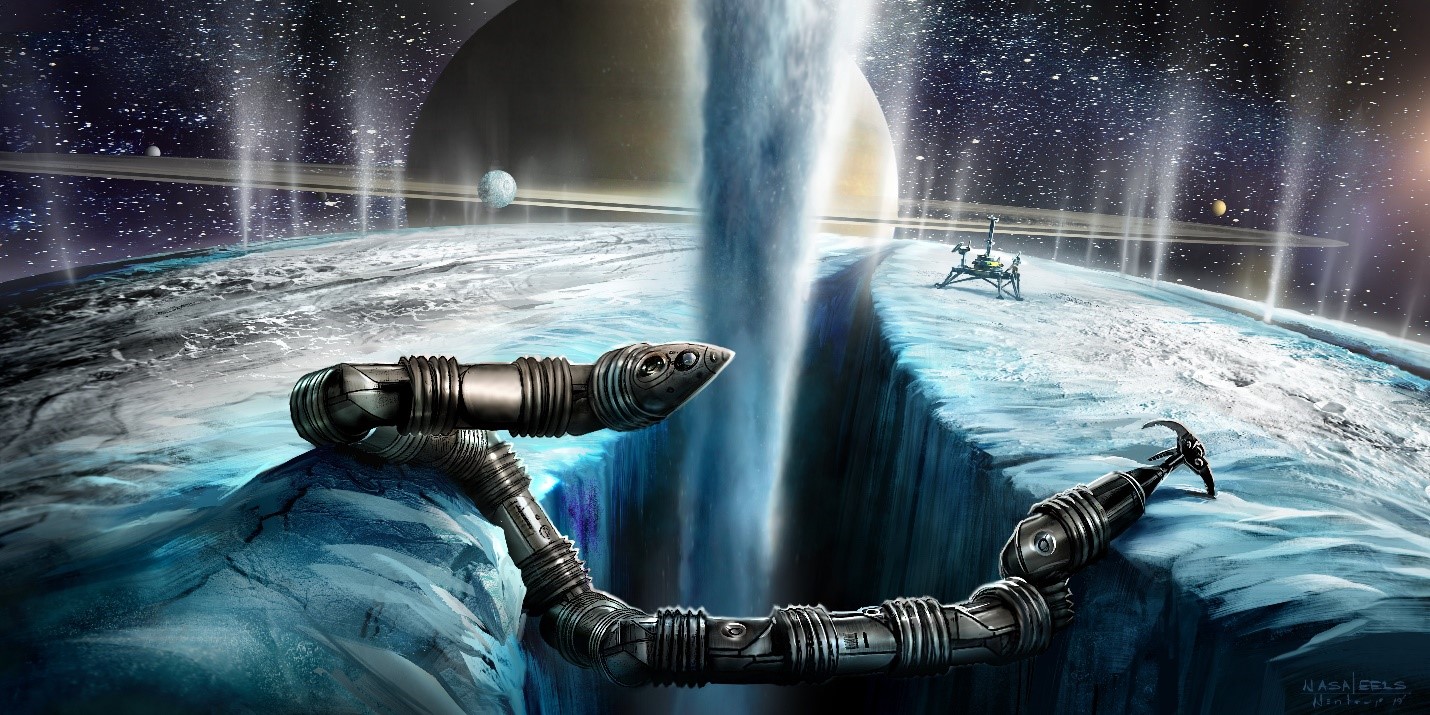NASA has sent a series of exploratory vehicles to other celestial bodies. With a few exceptions, these were wheeled robot vehicles. Soon, there will be another robot explorer launched but it will not be a wheeled vehicle. It is built to look a lot like a snake. It is called the Exobiology Extant Life Surveyor (EELS) and it will impress the world with some fascinating science.
EELS is a NASA project aimed at finding signs of life on Enceladus which is one of the biggest moons orbiting Saturn. Right now, the project is only in the prototype phase. According to a recent statement released by NASA, EELS is eventually meant to “explore internal terrain structures, assess habitability and ultimately search for evidence of life. It is designed to be adaptable to traverse ocean-world-inspired terrain, fluidized media, enclosed labyrinthian environments and liquids.” It is also self-propelled. The snake-like body will be moving on its own. EELS was designed to be very flexible. It should be able to get anywhere, go through anything, and find any signs of life.
While there is ongoing research to find life on Mars or Venus, many astronomers believe that the best chance to find alien life will be on Enceladus. This is because Enceladus is a water world. Data from the Cassini mission showed researchers that the entire moon is covered in liquid water right under the icy surface. Water constantly spews out through cracks in the crust, sending plumes of vapor, gas and debris out in giant plumes. Some of these material form one of Saturn’s rings. When Cassini took samples from that ring, it discovered a substance called silica nanograins.
According to NASA, silica nanograins are only created “where liquid water and rock interact at temperatures above 90 degrees Celsius (about 200 degrees F). This points to hydrothermal vents deep beneath Enceladus’ icy shell, not unlike the hydrothermal vents that dot the ocean floor here on Earth.” This means that although Enceladus is far away from the Sun, its vast underground ocean is theoretically habitable.
EELS is being sent to Enceladus to explore its oceans. The robot will need to be able to slither into vents in the crust and swim through the oceans underneath. That design will also make the robot an excellent candidate for other applications such as exploring the Martian polar ice caps. It could even Abe used to spelunk into crevasses in ice sheets here on Earth.
Sophisticated robots are being designed and constructed to mimic many Earthly life forms. They can swim, fly, roll, slither and walk. They range from tiny insect-like things to big vehicles that can carry passengers and people. While they are currently being applied to myrid uses here on Earth, in the future it is likely that they will be used to explore celestial bodies like the EELS. As more sophisticated artificial intelligence evolves, there may come a day when exploratory robots will be able to independently deal with unforeseen problems and interact with their human controllers as thinking entities.
